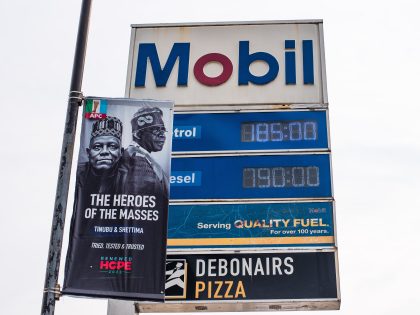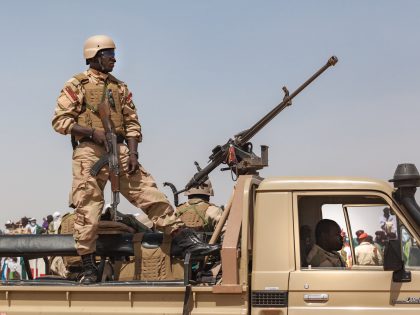The Westgate Mall photographs
The photographs of the terror attack at Nairobi's Westgate Mall depict an ordinary day for people at the mall gone terribly wrong.

A screen grab of The Wall Street Journal on October 2, 2013.
It has been about two weeks since the attacks at Westgate Mall in Nairobi, and as the news reports about it and its aftermath quiet, the presence of its photographs are still strong. They appear on a variety of websites; from The Telegraph to TotallyCoolPix.com.
I first learned of the attacks through these photographs, scrolling through photographs that photojournalists had taken, mainly from inside the mall, largely alongside plain-clothes policemen. The webpages all begin with a warning of graphic or disturbing images. The warnings’ deeper implication is that the political voyeurism of photography is to be amplified so that it is unclear if we should be looking at these photographs at all.
But we do. At least I did. The photographs depicted what I can only, banally, sum-up as an ordinary day for people at the mall gone terribly wrong. Most of the police, even, are in plain-clothes. Amidst the overturned expectations of time spent at Westgate, however, the mall itself remains constant in these early photographs. There are a few which differ, mainly outdoor photographs, which show parts of the mall in disarray.
These exceptions accentuate how little of Westgate’s infrastructure was initially damaged. Preserved through these photographs, the mall appears somehow stable. In several photographs, mannequins stay upright, even though the window they are behind has been shattered by a bullet. Others show people using the stores to hide, but the coffee-shop counter behind which they are lying down still offers lids for coffee cups. The stairwell in a much-republished photograph remains a back-space that few patrons will ever go. Nakumatt’s slogan, “You need it, We’ve got it” sits unperturbed, slightly hidden behind a kneeling plain-clothed policeman. Though a person lies dead and their blood is on the floor, most of the tiles remain clean.
None of these (the tiles, slogan, stairs or mannequins) are the focal point of the photographs, and few will look at Westgate Mall the same way again. Yet the mall, as a bastion of urban capitalism, does not change. The photographs’ strong compositions replicate and prolong this constancy.
By the end of the siege, this changes. Photographs are published of collapsed floors, burnt stores, knocked-over mannequins and men inside wearing respiratory masks. These replace the initial panicked tone with something else. There is a hint of irony in the bright sunlight which illuminates a comfortable café seating area, now abandoned and largely destroyed in the aftermath of the siege.
The photographs do not, however, tell us what it all means. The disjuncture between a soldier, ready to shoot, and the pharmacy aisle down which he is walking is not entirely reconciled by the name Al-Shabaab, which is given in the photograph’s caption. Nor is the irony of photographs after the siege convincing. It hinges on a worn narrative of Africa’s precarious modernity nicely summed in one Wall Street Journal Online headline, Kenya Siege Damages African Success Story.
The fact that the brute violence of dead bodies, blood, soldiers, guns and debris lies in juxtaposition against its surroundings should lead us to question where we consider violence to belong. It was not, after all, the violence itself that was nauseating– we are inundated with such imagery all the time. It is perhaps all too obvious to point out that it was the mall that grabbed international media’s attention.
Yet discussion of the setting has been muted, perhaps for fear of falling into victim-blaming. That, however, has not stopped most media from describing the patrons as wealthy and ex-pats, and pointing to foreign ownership, in order to explain the mall as a target. It is an explanation which caricatures all involved and quickly turns into a for/against “debate” about Islam (look at the comments section here, for example). It is a simplified narrative (which is not altogether accurate) and a poor substitute for (or good distraction from) a deeper understanding of the ways that terrorism, capitalism and security are bound together in complex systems I don’t pretend to fully understand.
Westgate Mall, and what it might stand for, has become the elephant in the room. In the photographs, the mall has an overwhelming presence, but no role. Rather, the photographs capture a parallel of violences – terrorist, state, corporate (in other words, the violences of modernity) – existing side-by-side but not connecting as a mutually-constructed event. But perhaps that is not the task of these photographs. It is possible that their affect, and our powers of interpretation, lies in their incoherence.



















